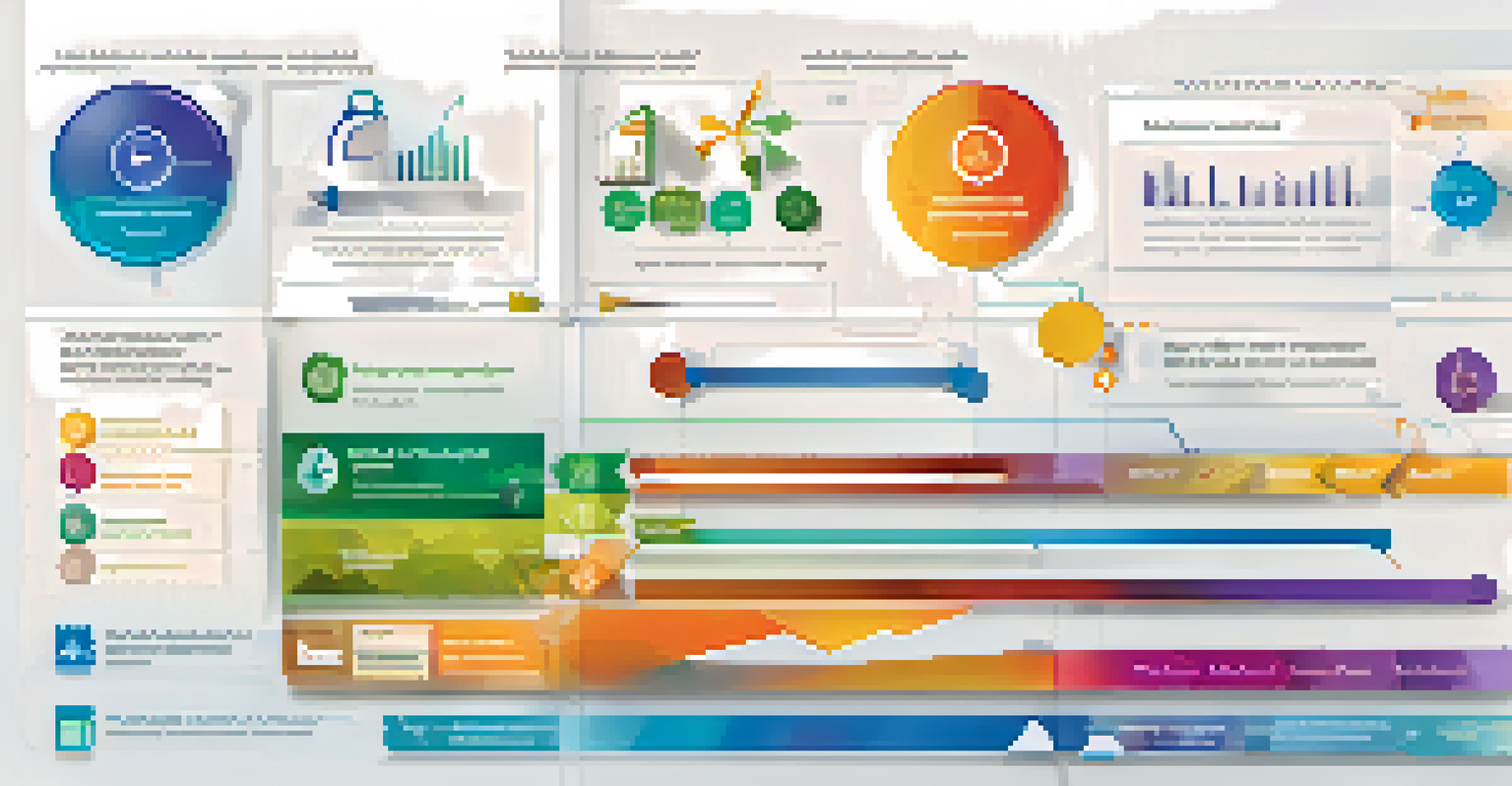The Role of Assessment in Measuring Digital Equity Progress

Defining Digital Equity: What Does It Mean?
Digital equity refers to the fair access and opportunity to use technology for all individuals, regardless of their socioeconomic status. It's about ensuring that everyone can participate in the digital world, whether for education, employment, or communication. In an age where technology shapes our daily lives, understanding digital equity is crucial for fostering inclusive communities.
Digital equity means that everyone has the ability to participate in the digital economy, regardless of their socioeconomic status.
Consider this: if one community has high-speed internet and access to digital devices while another does not, the latter is at a significant disadvantage. This gap can lead to unequal opportunities, further entrenching existing disparities. By defining digital equity clearly, we can better assess where improvements are needed and how to achieve them.
Ultimately, digital equity is not just an ideal; it’s a necessity. As we move further into a digital-first society, ensuring everyone can participate is essential for creating a just and equitable world.
The Importance of Assessment in Digital Equity
Assessments play a vital role in measuring progress toward digital equity. They help identify gaps in access, skills, and resources, allowing stakeholders to make informed decisions. Without proper assessment, efforts to improve digital equity may be misdirected or ineffective.

Moreover, assessments can highlight specific areas needing attention, such as targeted training programs or improved infrastructure. For instance, a community may discover through assessment that many residents lack basic digital skills, prompting initiatives to provide workshops and training.
Understanding Digital Equity
Digital equity ensures fair access to technology for all, regardless of socioeconomic status, fostering inclusive communities.
In this way, assessments not only measure progress but also drive action. They serve as a roadmap, guiding efforts to ensure that all individuals have equal opportunities to thrive in a digital landscape.
Types of Assessments Used in Measuring Digital Equity
There are various types of assessments that can be employed to measure digital equity, including surveys, data analytics, and performance evaluations. Surveys can capture individuals' access to technology, while data analytics can reveal trends and patterns in usage across different demographics. Performance evaluations can assess the effectiveness of digital education programs.
Access to technology is not just a privilege; it is a necessity for social and economic mobility.
For example, a survey might show that a significant percentage of a community lacks internet access, prompting local leaders to explore solutions like community Wi-Fi initiatives. Similarly, data analytics might reveal that certain groups are less likely to use digital tools, guiding targeted outreach efforts.
Each assessment type provides unique insights, creating a comprehensive picture of digital equity within a community. This information is crucial for developing effective strategies that address identified gaps.
Challenges in Assessing Digital Equity
Despite the importance of assessments, challenges persist in measuring digital equity accurately. Issues such as data privacy concerns, lack of standardized metrics, and resource limitations can hinder effective assessment. For instance, individuals may be reluctant to share information due to privacy fears, skewing results.
Additionally, the absence of universally accepted metrics can make comparisons between communities difficult. What one community considers a benchmark for digital access may differ significantly from another’s standards. This variability can complicate efforts to assess progress on a broader scale.
Importance of Assessments
Assessments are essential for identifying gaps in digital access and skills, enabling targeted interventions to promote equity.
Moreover, resource limitations can restrict the frequency and depth of assessments. Communities may lack the funding or expertise needed to conduct thorough evaluations, leaving them in the dark about their digital equity status.
The Role of Stakeholders in Digital Equity Assessment
Stakeholders, including government agencies, non-profits, and community organizations, play a crucial role in digital equity assessments. Their involvement ensures a collaborative approach, bringing diverse perspectives and resources to the table. This teamwork is essential for understanding the unique needs of different communities.
For example, local non-profits may have direct access to underserved populations and can provide valuable insights into their specific challenges. Government agencies can offer data and resources that help inform assessments, while educational institutions can assist in evaluating digital literacy programs.
By collaborating, stakeholders can create a more comprehensive understanding of digital equity. Their combined efforts can lead to more effective strategies and programs that truly address the needs of various communities.
Using Assessment Results to Drive Change
Once assessments are completed, the real work begins: using the results to implement meaningful change. Data-driven decisions can lead to targeted interventions that address the specific needs identified through assessments. For instance, if a community assessment reveals a lack of digital skills among residents, tailored training programs can be developed.
Moreover, sharing assessment results with the community fosters transparency and accountability. When residents see how their input is being utilized to drive change, it encourages ongoing participation and support for digital equity initiatives. This can create a positive feedback loop where communities actively engage in improving their digital landscape.
Stakeholder Collaboration
Collaboration among stakeholders is vital for effectively assessing digital equity and addressing the unique needs of communities.
Ultimately, the goal of any assessment is not just to gather data but to inspire action. By transforming insights into concrete steps, we can make significant strides toward achieving digital equity.
Future Directions for Digital Equity Assessment
Looking ahead, the landscape of digital equity assessment is likely to evolve. As technology advances, new methods and tools for assessment will emerge, allowing for more precise and comprehensive evaluations. For example, artificial intelligence and machine learning could provide sophisticated insights into digital access and usage trends.
Additionally, there may be a growing emphasis on community-driven assessments, where residents actively participate in identifying their own needs and challenges. This participatory approach can lead to more engaged communities and solutions that are truly reflective of the people they aim to serve.

As we embrace these future directions, it's crucial to remain focused on the ultimate goal: ensuring that everyone has equal access to the opportunities that technology offers. By continually refining our assessment methods, we can make lasting progress in achieving digital equity.